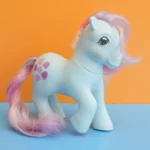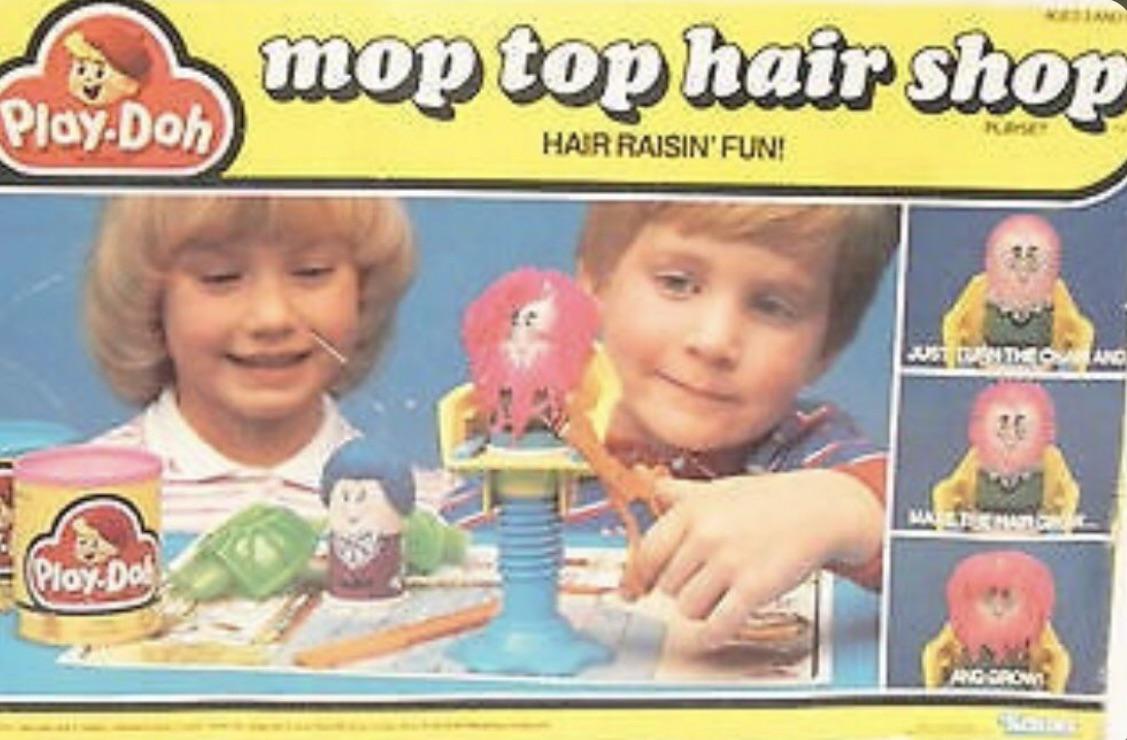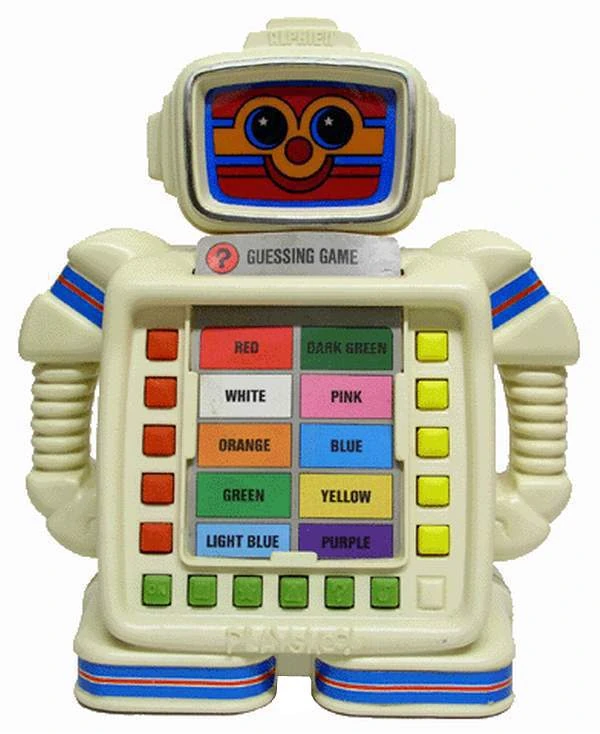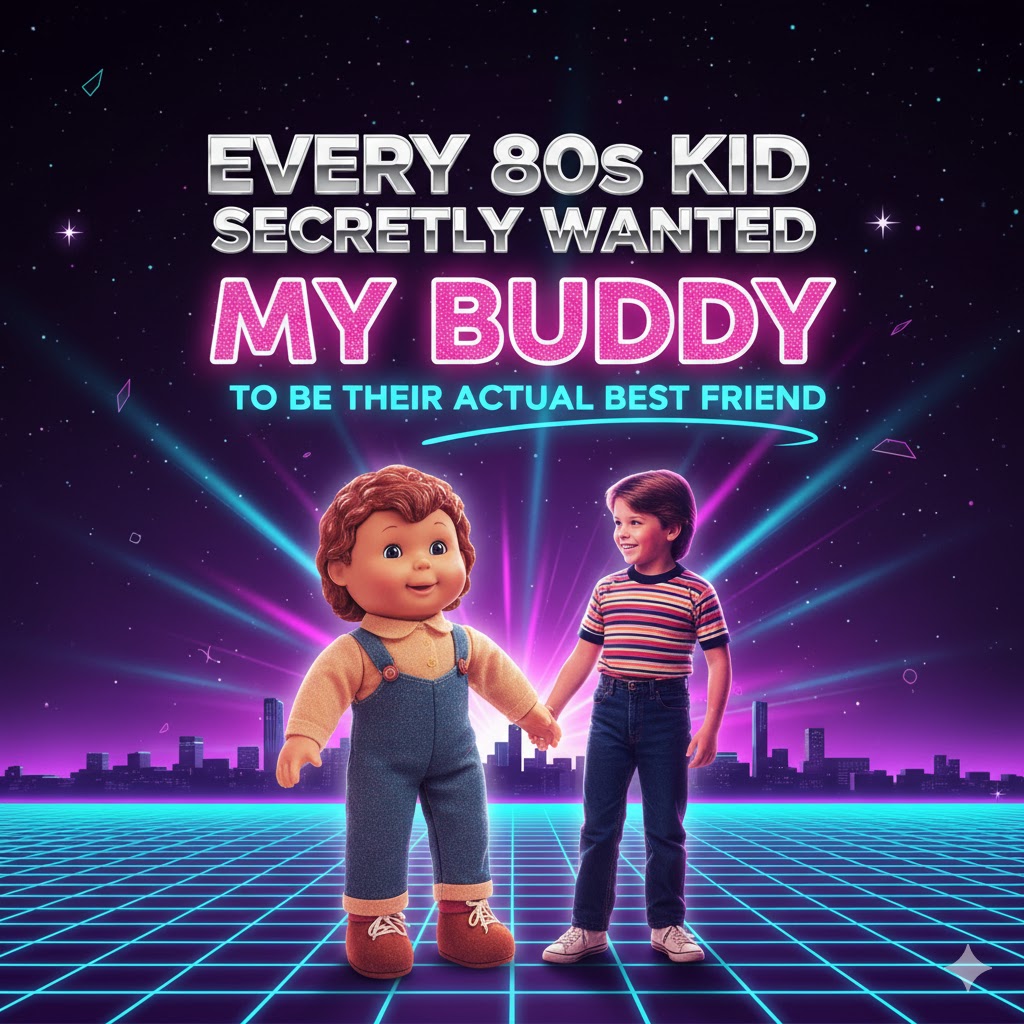 In a decade packed with cartoon mascots, sugar-high commercials, and aisles of plastic imagination, few toys captured the hearts of children—particularly girls—quite like My Little Pony. With their pastel bodies, glittery symbols, and flowing manes that begged to be brushed, the original My Little Ponies galloped their way into the bedrooms and toy chests of millions of kids during the 1980s. They weren’t just toys—they were trusted companions, characters in endless stories, and tiny plastic vessels for wide-eyed wonder. In an era that redefined what licensed toys could be, My Little Pony stood out not just as a product, but as a cultural touchstone.
In a decade packed with cartoon mascots, sugar-high commercials, and aisles of plastic imagination, few toys captured the hearts of children—particularly girls—quite like My Little Pony. With their pastel bodies, glittery symbols, and flowing manes that begged to be brushed, the original My Little Ponies galloped their way into the bedrooms and toy chests of millions of kids during the 1980s. They weren’t just toys—they were trusted companions, characters in endless stories, and tiny plastic vessels for wide-eyed wonder. In an era that redefined what licensed toys could be, My Little Pony stood out not just as a product, but as a cultural touchstone.
Hasbro introduced My Little Pony in 1983 after the relative success of a previous toy line called My Pretty Pony, which had been launched in 1981. My Pretty Pony was a larger, more realistic-looking horse aimed at a broader market, but it didn’t catch on in the way Hasbro had hoped. The key innovation came when the company, recognizing that little girls weren’t necessarily seeking realism, scaled the ponies down, softened their features, added brushable manes and tails, and gave each one a unique name and personality. What followed was an explosion of colorful characters, each sporting their own signature “cutie mark” on their flanks—a butterfly, a balloon, a rainbow, a slice of cake. These weren’t just ponies—they were magical friends with their own sense of identity.
The original lineup of ponies came in earth tones, pastels, and bright candy colors, with names like Cotton Candy, Minty, Butterscotch, and Blue Belle. Kids could brush their hair, line them up, trade them with friends, or invent elaborate soap opera-worthy storylines involving Ponyland—the mystical world where the ponies lived. What helped elevate the line beyond just another doll or figurine was the way each pony seemed to represent a personality trait, a mood, or a role in a tiny society that mirrored the idealized version of childhood itself.
Hasbro wasted no time expanding the line. Soon, the toy shelves were filled with new kinds of ponies: Pegasus Ponies with shimmering wings, Unicorn Ponies with magical horns, Sea Ponies shaped like seahorses for bath-time adventures, and Baby Ponies that came with rattles and bibs. There were even mail-order ponies—rare designs kids could send away for using “pony points” cut from packaging. With each wave, the world of My Little Pony grew more elaborate and fantastical. They lived in playsets like the Dream Castle, the Lullabye Nursery, and the Paradise Estate, all rendered in bubblegum pinks and bright teals. These miniature homes came with accessories, tiny furniture, and the occasional plastic animal friend, inviting children to imagine Ponyland as a bustling, friendly universe full of tea parties and gentle adventures.
But the magic didn’t stop at the toys. My Little Pony quickly became part of the larger toy-to-TV ecosystem that dominated the 1980s, joining the ranks of He-Man, G.I. Joe, and Transformers—all Hasbro properties as well. In 1984, the ponies got their first animated special, My Little Pony: Rescue at Midnight Castle, followed by Escape from Catrina in 1985. These specials established a whimsical but occasionally dark tone, mixing sugary sweetness with real peril. Then came the full-fledged My Little Pony ‘n Friends TV series in 1986, which brought weekly tales of Ponyland to television screens across the U.S. The show alternated My Little Pony segments with unrelated series like Moondreamers or The Glo Friends, but it was always the ponies who stole the spotlight.
The show’s universe was a strange and wonderful mix of fantasy, humor, and moral lessons. There were villains like the evil witch Hydia, bizarre transformations, magical jewels, and plenty of songs. Unlike some other toy-based cartoons, which focused on battles or missions, My Little Pony leaned into cooperation, friendship, and kindness—values that resonated deeply with the intended audience. For many children, especially girls who were often left out of the action-packed narratives of other toy lines, My Little Pony provided an empowering, creative space. Here, being gentle, imaginative, and emotionally open weren’t just traits—they were strengths.
By the mid-1980s, My Little Pony was a juggernaut. Hasbro rolled out waves of new ponies each year, introducing dozens of variants with names like Lickety-Split, Tickle, Gusty, and Fizzy. There were Tropical Ponies, Twinkle-Eyed Ponies with gem eyes, and the So-Soft Ponies, flocked with a velvety fuzz that made them extra huggable. Parents might not have remembered every name, but kids did. Each new pony had a place in a child’s personal mythology, and the more you had, the bigger and richer your own version of Ponyland became.
Of course, not everyone loved the pastel parade. Some critics accused Hasbro and other companies of exploiting children’s emotions through character-driven merchandising. The idea that a toy line was being propped up by a cartoon, which in turn existed only to sell more toys, led to concerns about consumerism and media manipulation. But to the millions of children immersed in the world of My Little Pony, these weren’t cynical marketing strategies—they were magical invitations. Owning a My Little Pony didn’t feel like a transaction; it felt like gaining a new friend.
Like many toy fads, the original My Little Pony line began to lose steam toward the end of the decade. By the early 1990s, Hasbro had retired the original generation, though the brand would see several reboots and revivals over the next few decades. Each new generation brought redesigned figures, updated storylines, and new approaches to the franchise, but the core elements—friendship, individuality, and imagination—remained intact. The most famous reboot came in 2010 with My Little Pony: Friendship Is Magic, a show that not only found a new generation of young fans but unexpectedly captured the attention of adults, particularly through the “brony” fandom. That chapter of the brand’s legacy is a phenomenon all its own.
Still, for many who grew up in the 1980s, it’s the original ponies—the rubbery ones with tangle-prone hair and sun-faded symbols—that stir the deepest nostalgia. They remind people of Christmas mornings, of childhood bedrooms strewn with accessories and saddles, of Saturday mornings spent watching the cartoon with a cereal bowl in hand. They represent a specific moment in pop culture history when toys weren’t just toys—they were worlds.
My Little Pony, at its heart, was about joy. Pure, pastel-colored joy. In a time of booming consumerism, Cold War anxieties, and rapid social change, these little plastic ponies offered something simple and sincere: a world where kindness mattered, where everyone had a role to play, and where friendship was, indeed, magic—even before the slogan made it official.
Long before hashtags and online fandoms, before apps and influencers, My Little Pony gave children the power to imagine, to care, and to play freely. The ponies may have been molded from plastic, but the memories they helped create were—and still are—absolutely real.


